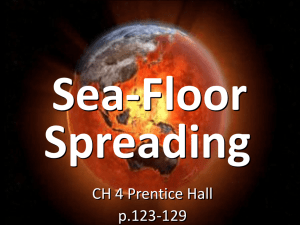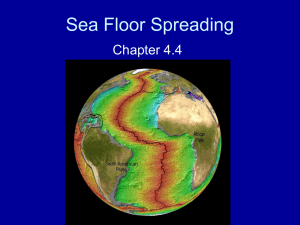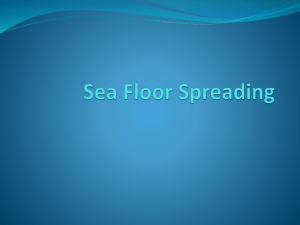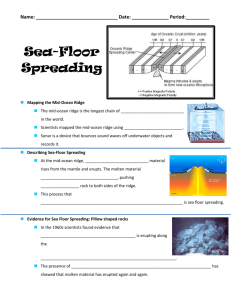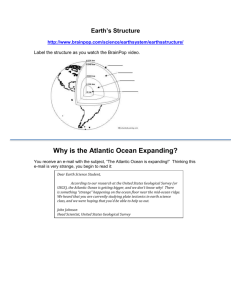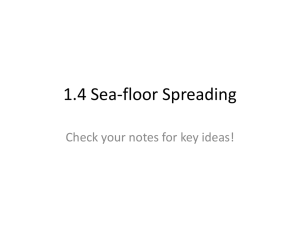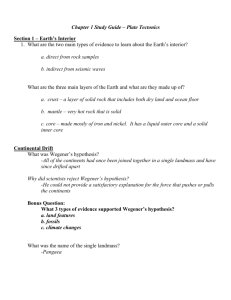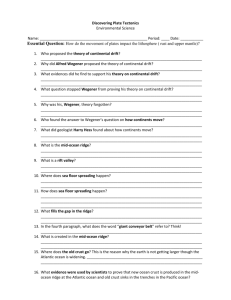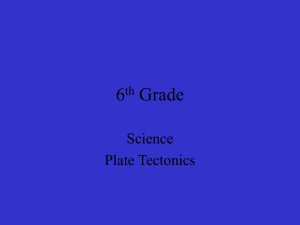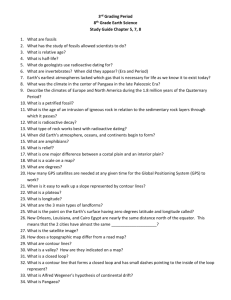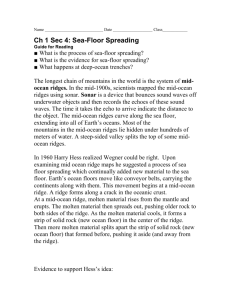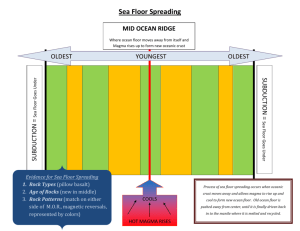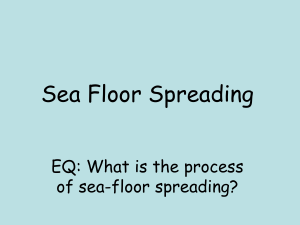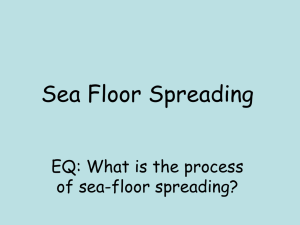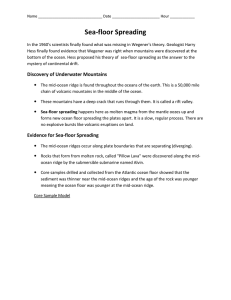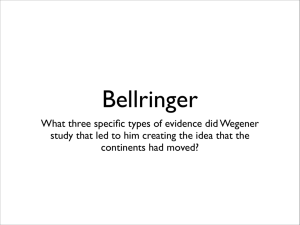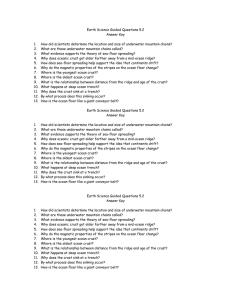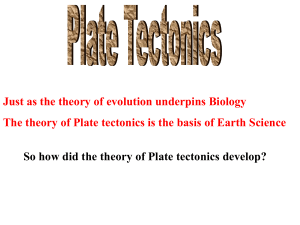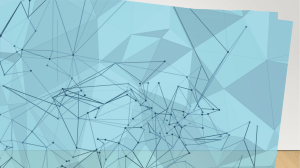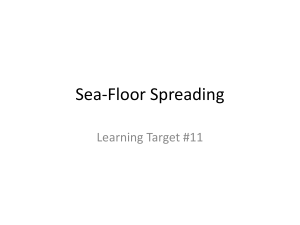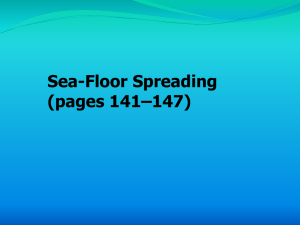Earth Science
advertisement
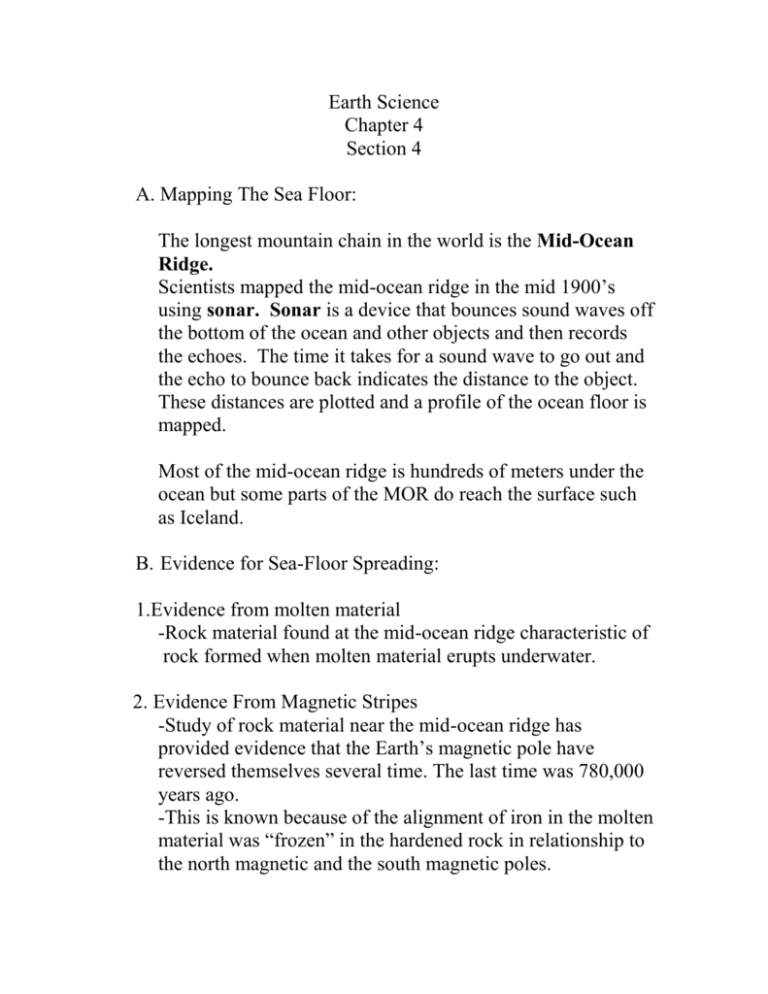
Earth Science Chapter 4 Section 4 A. Mapping The Sea Floor: The longest mountain chain in the world is the Mid-Ocean Ridge. Scientists mapped the mid-ocean ridge in the mid 1900’s using sonar. Sonar is a device that bounces sound waves off the bottom of the ocean and other objects and then records the echoes. The time it takes for a sound wave to go out and the echo to bounce back indicates the distance to the object. These distances are plotted and a profile of the ocean floor is mapped. Most of the mid-ocean ridge is hundreds of meters under the ocean but some parts of the MOR do reach the surface such as Iceland. B. Evidence for Sea-Floor Spreading: 1.Evidence from molten material -Rock material found at the mid-ocean ridge characteristic of rock formed when molten material erupts underwater. 2. Evidence From Magnetic Stripes -Study of rock material near the mid-ocean ridge has provided evidence that the Earth’s magnetic pole have reversed themselves several time. The last time was 780,000 years ago. -This is known because of the alignment of iron in the molten material was “frozen” in the hardened rock in relationship to the north magnetic and the south magnetic poles. 3. Evidence From Drilling Samples - Drilling samples of rock from the ocean bottom and identifying the age of the rock was used to determine that the rock farther away form the mid-ocean ridge is older than the rock material closer to the midocean ridge. The youngest rocks were always in the center of the ridges. - This evidence showed that sea-floor spreading did take place. C. Subduction at Deep-Ocean Trenches: -What happens to old ocean crust when new forms? A sea-floor spreading occurs new ocean crust is being formed at mid-ocean ridges. Old ocean crust collides with continental crust or larger ocean crust and is pushed down ward into the mantle. This is known as Subduction. At a subduction zone a deep-ocean trench is formed.
